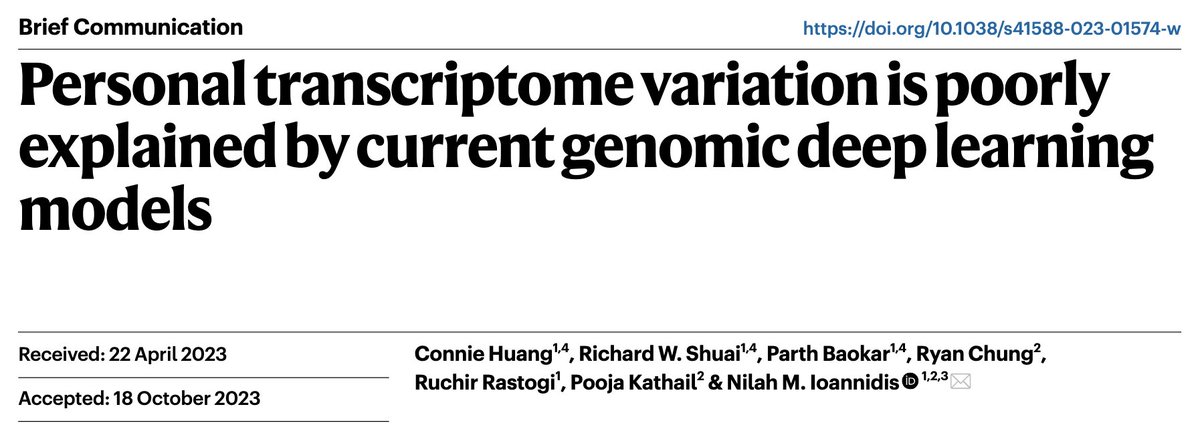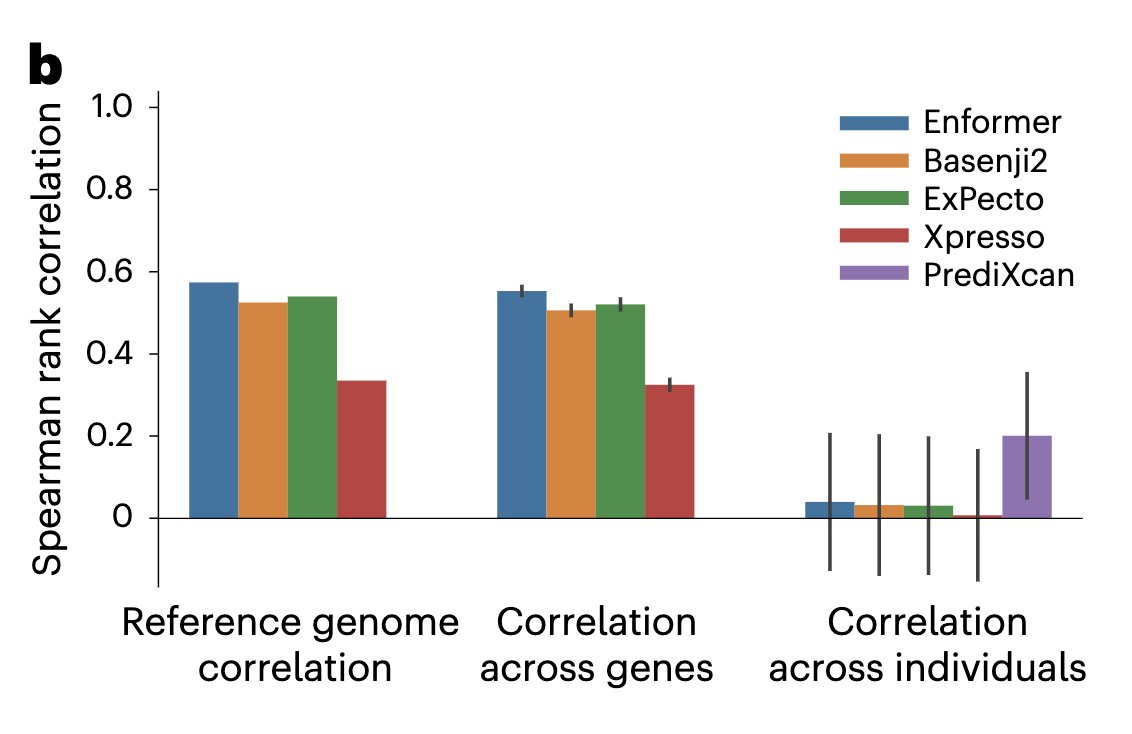I've written up a "crash course" on population genetics parameters useful for thinking about recent selection, heritability, and group differences (as part of a longer write-up on these concepts).
I'll summarize the key points here 🧵: gusevlab.org/projects/hsq/#…

I'll summarize the key points here 🧵: gusevlab.org/projects/hsq/#…

A preface: if you're generally interested in population genetics it's better to learn from first principles, and I've linked some useful resources to that end (many free). In particular (spoiler) recent evolution excludes some of the more interesting concepts and personalities. 

But one downside of the general approach is that it can be hard to get a feel for real time (for example when populations are modeled in terms of 4Ne\mu). Here we'll fix three parameters based on data: time (t=65k years), population size (Ne=10k), and selection (s=~10^-4).




We can start by modeling how genetic variants move under neutral drift: very slowly! In 120k years a 5% allele is expected to accumulate just ~1% of drift variance. We can also think in terms of allele "age", and common variants are VERY old (mostly pre-migration).








Now let's add selection. Under the weak coefficients we see in real data, selection acts very slowly. Most common variants under negative selection will stay common. And new variants under positive selection will stay rare. It would take ~300k years for a 95% allele to go to 1%.






These shifts are even slower under stabilizing selection, where traits move towards a fitness optimum instead of directionally up/down. This is likely the way populations have adapted to changing environments (we'll come back to this later).




Now that we have a model for selection and drift, we can test for whether variants are under selection. It turns out this test is very powerful when selection is strong, even 100 samples is enough. Whereas in the "nearly neutral" range it is effectively undetectable. 

We can quantify genetic variance using F_ST, a fundamental measure of within versus between population correlations and often misunderstood. Part of the confusion is there are two derivations - Nei's and Hudson's - and they can be meaningfully different.








Under strong assumptions, F_ST can be related to population size and migration, but it is compatible with many different population dynamics in a way that can be non-linear and unintuitive.






Moreover, F_ST is highly dependent on *which variants* are used to estimate it, and this can lead to highly unintuitive results. For example the apparently higher F_ST within chimps than between chimps/humans -- an artifact of how sub-populations are tested.






A useful derivation is that Hudson's F_ST bounds the difference in trait mean between populations under neutral drift. We can confirm this in simulations. For a typical ~10% heritable trait, the (African/European) population difference is at most 1.5% (in either direction). 

That's under neutrality, but under stabilizing selection, things are constrained even further but in complicated ways. After a shift in the fitness optimum, genetic variation is first rapidly selected on, and then gradually (and mostly arbitrarily) purified out of the population. 

Between populations with the same fitness optimum, the mean trait value will be more constrained than under neutrality. But, it will also look like genetic variation has changed MORE substantially (e.g. F_ST). Interpretation is even more complicated with environmental shifts.




Finally, this brings us to the Breeder's Equation, which connects heritability and the response to selection under a fixed environment. In controlled breeding experiments (e.g. maize) response can be stable for many generations (consistent with polygenicity and new mutations).






But in natural populations, the response often appears static or even negative (aka the "stasis paradox")! I highlight some examples compiled by Walsh & Lynch: bias in heritability estimates, indirect/environmental confounding, or shifts in the environment are all at play.






This "missing response" echoes the debate around "missing heritability", where molecular methods often produce lower estimates and identify environmental confounders. I wonder ... are humans more like maize under controlled breeding or like natural evolving populations? /fin
By the way, all the figures and simulations are pretty simple but I've put the code here in case it's useful: . Let me know if you spot an error.github.com/gusevlab/hsq_a…
@threadreaderapp unroll
• • •
Missing some Tweet in this thread? You can try to
force a refresh













